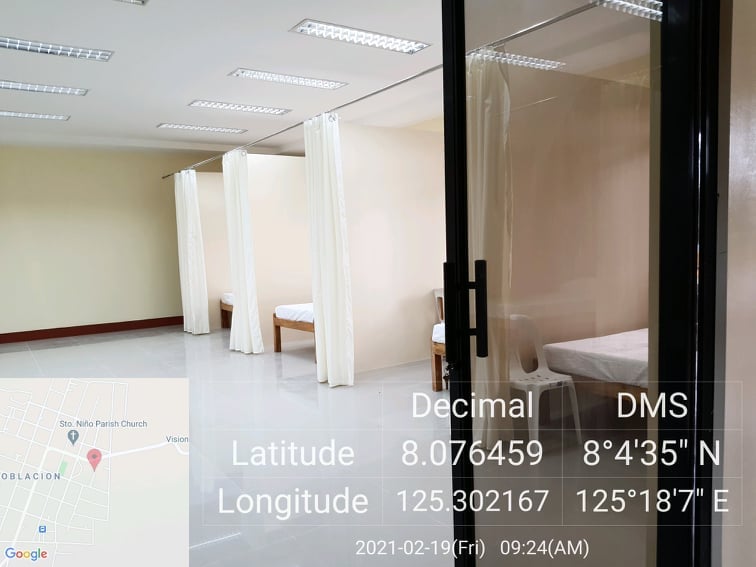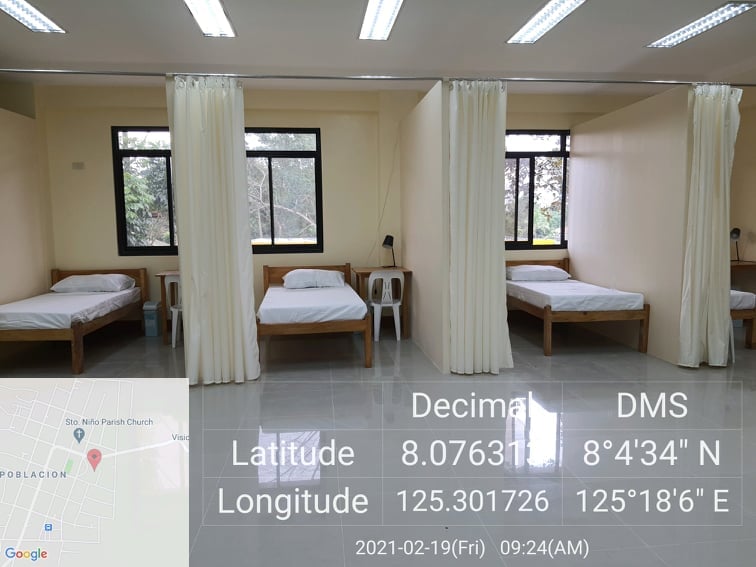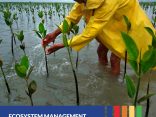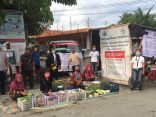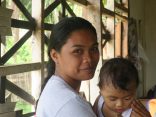Recent record-high reports on new active COVID-19 cases show that the pandemic is far from over. Even the slight decrease in transmission in Metro Manila offers little comfort, as other regions brace and prepare for possible surge.
In Mindanao, for example, local governments have expressed fatigue and dwindling resources to respond effectively to the pandemic, on top of other emergencies such as natural hazards, protracted conflict, and climate risks.
As hospital beds run out, people are lining up in makeshift tents with some of them dying while waiting for their turn to be admitted. Overwhelmed health workers, insufficient space for treatment and isolation, and financial difficulty call for alternative and cost-efficient solutions.
From Alternative Temporary Shelters to Community Quarantine Facilities
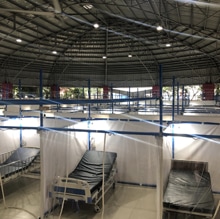
At the onset of the pandemic, local government partners of the Moving Urban Poor Communities in the Philippines toward Resilience (MOVE UP) Project were aware that the rising cases and lack in medical resources and spatial capacity could pose grave consequences in densely populated cities.
In an effort to complement government response, MOVE UP project along with partners such as Czech Republic Humanitarian Aid and United Architects of the Philippines – Emergency Architects worked together to adapt Alternative Temporary Shelters (ATS) into quarantine facilities.
Despite mobility constraints and other health measures, the first Community Quarantine Facility adapted from ATS models was turned over in Malabon City on 18 June 2020, and received DOH certification in the same week. The experience in opening the 38-bed-capacity of the amphitheater still in operation has provided valuable lessons in replication of the strategy in other areas in Malabon and also in Mindanao.
Following the same strategy, community quarantine facilities were also set up by the local governments of Bukidnon, Misamis Oriental, Cagayan de Oro, Tandag City, and Surigao del Sur with support from MOVE UP and REACH projects.
Replication of Community Quarantine Facility Province of Bukidnon
The CQF set up in Bukidnon in August 2020 was deployed in Northern Mindanao Rehabilitation and Wellness Center in Malaybalay City, also known as the Provincial COVID-19 Center and was able to serve around 3,480 individuals according to the Provincial Health Office. MOVE UP and REACH projects supported this initiative by providing the LGU technical assistance on designing and setting up the CQF and in-kind support to set up the twelve (12) unit modular partition CQF amounting to Php 250,000.
The CQF made use of stainless-steel framing as partition, instead of the PVC pipes found in its previous versions. Technical experts from the LGU and MOVE UP decided to do so with the perspective that steel is easier to clean and more durable, thus could serve its purpose for a longer time and for future use in other disaster scenarios.
Apart from the four (4) modular partitions, MOVE UP and REACH projects also deployed three (3) portable hand washing stations (PHS) in strategic locations within the grounds of the Provincial Capitol.
In April 2021, in anticipation of rising COVID-19 cases, the local government of Bukidnon with support from the regional Department of Public Works and Highway replicated the translation of ATS into additional quarantine facilities in the municipalities of Cabanglasan, San Fernando, Impasug-ong, and the cities of Malaybalay and Valencia. With funding amounting to around Php 10 Million from DPWH, the ATS designs were adapted using locally available resources and materials. The additional facilities have since served more than 1,480 COVID-19 cases across the five LGUs.
This replication initiative is testament to the effectiveness of the ATS process and its relevance in the current context. Bukidnon PHO also testified how valuable the MOVE UP support is in terms of making sure that the design follows IPC protocols and DOH certification requirements. Moreover, with the collaboration among the province, LGUs, and the project, the CQF design could also be used to provide temporary shelter in case of future disasters caused by natural hazards or conflict.
To date, the COVID-19 cases in Bukidnon continue to rise and stand as the second-highest in the Northern Mindanao region, prompting local officials to consider the situation as no longer high-risk, but at critical level. Frontline sentiments support the alert level, with healthcare workers saying that they are exhausted in finding ways to accommodate patients and managing the bodies of those who died.
Currently, isolation units are at full capacity, while those requiring immediate care have filled up 90 to 95 percent of hospital bed capacity, said Provincial Health Office (PHO) head Dr. Gary Guido Tabios. PHO data shows that there are 4,291 active cases still waiting for spaces in hospitals and isolation facilities.
The support from MOVE UP since 2020 and the LGU replication early this year has helped the LGU to augment its health facility capacities to address these rising cases. However, there are still gaps. In addition to the initial CQF support and the LGU’s replication, MOVE UP is allocating an additional Php 300,000 to support in filling the gaps in isolation facilities, on top of other interventions such as providing food packs, hygiene kits, WASH kits, rapid response mechanism, and protection support.
However, as needs in one part of the region are being addressed, the other parts of Northern Mindanao face their own challenges in responding to COVID-19 pandemic. DOH fears that despite campaigns on inoculation and other measures, there is “no improvement in surges” in certain areas including Northern Mindanao. Nearby provinces are not faring any better. The call is now for greater collaboration and sharing of lessons and effective practices, including the MOVE UP experience, at local, regional, and national levels.
Moving Urban Poor Communities Toward Resilience (MOVE UP) Project is funded by EU Civil Protection & Humanitarian Aid – ECHO and is implemented by ACCORD Incorporated, Action Against Hunger Philippines, CARE Philippines, and Plan International Philippines.
To know more about the ATS System and the practical approach to convert it as CQFs, download the 2020 ATS Manual through this link: https://tinyurl.com/2020ATSManual

